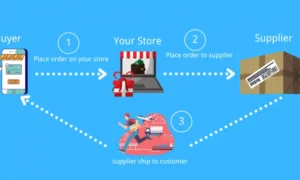Expanding into international markets is an exciting milestone for any tech-driven company. Whether you’re launching a new product, onboarding international clients, or opening a manufacturing site abroad, global growth demands more than ambition and logistics — it requires precise communication. And in highly specialized sectors, technical translation becomes a critical part of the equation.
Neglecting the quality and accuracy of your technical content in multiple languages could lead to misunderstandings, non-compliance, or even safety risks. For Canadian companies with global ambitions, the stakes are too high to ignore.
Why Technical Documentation Is a Strategic Asset
Every device manual, data sheet, API description, or engineering diagram your company produces is part of your brand’s technical backbone. When these documents are translated for foreign partners or end-users, they must retain both clarity and technical accuracy.
Poorly translated content can result in:
-
Assembly or usage errors
-
Product returns or failures
-
Loss of trust in your brand
-
Legal liabilities in regulated industries
On the flip side, well-translated technical documents inspire confidence, helping your clients, partners, and local teams engage with your product correctly and efficiently.
A Hidden Driver of Customer Experience
In sectors like software, AI, robotics, or aerospace, even your user interface, help centre, or error messages are part of the technical experience. If the terminology is inconsistent or mistranslated, the user experience deteriorates fast — no matter how advanced the technology is.
Meeting Global Compliance Requirements
When your product enters new markets, you’re also entering new regulatory frameworks. Each region may have its own rules for technical content — especially in industries like medtech, energy, automotive, or aerospace.
A clear, compliant translation can be the difference between market access and rejection. Some countries require that safety instructions, quality standards, or operating procedures be delivered in the local language and meet specific formatting or terminology standards.
That’s why working with experts in technical translation services is not just a linguistic decision — it’s a business imperative.
Why Your Team Can’t Do It Alone
While your engineers or developers might be fluent in English or French, that doesn’t mean they can translate complex documentation effectively. Technical translation is a hybrid skill that requires:
-
Deep knowledge of the subject matter
-
Mastery of both source and target languages
-
Familiarity with industry-specific glossaries
-
Compliance with formatting, units of measurement, and regional standards
This is particularly relevant in Canada’s multilingual business environment, where companies often manage bilingual requirements domestically while tackling multilingual challenges abroad.
Native Fluency Meets Technical Expertise
Professional technical translators are not generalists. They specialize in fields such as mechanical engineering, biotechnology, electrical systems, or IT infrastructure — and many are former engineers or industry professionals themselves.
Choosing the right partner ensures that your translated content:
-
Matches your original intent
-
Respects terminology consistency
-
Complies with regulatory expectations
-
Enhances usability across languages
A Strategic Investment — Not a Last-Minute Fix
Too often, companies treat translation as an afterthought — something to tack on after everything else is done. But doing so introduces delays, rework, and hidden costs. Worse, you risk entering a market unprepared.
Instead, integrate technical translation early in your expansion process, as part of your global readiness plan. This allows for:
-
Coordination between development and localization
-
Early identification of language-specific issues
-
Streamlined regulatory approvals
Conclusion
Going global is about more than reaching new customers — it’s about being understood across borders, industries, and technical contexts. Don’t let a poor translation derail years of innovation.
From documentation to product interfaces, partnering with a professional technical translation provider can make the difference between success and confusion. As you expand into new markets, ensure your words work as precisely as your technology.
































